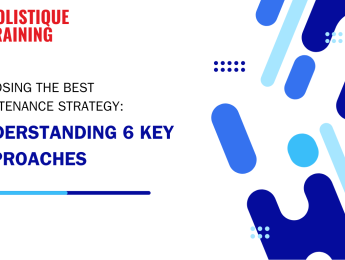Introduction
Maintenance practices are crucial for ensuring the smooth operation and longevity of equipment and systems across various industries. Understanding the different types of maintenance—such as preventive, predictive, corrective, condition-based, reactive, and reliability-centered—is essential for optimizing performance and minimizing downtime. Each approach offers distinct benefits and is suited to different operational contexts and equipment requirements. By selecting the right maintenance strategy, organizations can enhance efficiency, reduce costs, and ensure the reliability and safety of their operations. This overview highlights the significance of each maintenance type and provides guidance on how to choose the most effective approach for your specific needs.
1. Preventive Maintenance
Preventive Maintenance is a proactive approach to equipment and system upkeep, designed to prevent breakdowns and extend the lifespan of assets. It involves regularly scheduled inspections, adjustments, cleaning, lubrication, and replacements of parts or components, all done according to a predefined schedule. The primary goal of preventive maintenance is to identify and fix potential issues before they escalate into costly failures or downtime. By following this approach, organizations can avoid unexpected equipment malfunctions, which often lead to production halts and emergency repairs.
Benefits of preventive maintenance are significant. It reduces the likelihood of unexpected breakdowns, thereby ensuring continuous and smooth operations. This proactive maintenance approach enhances equipment reliability and efficiency, ultimately lowering long-term maintenance costs by preventing expensive emergency repairs. Moreover, it improves safety by reducing the risk of equipment failures that could endanger workers. Regular maintenance checks also help in maintaining the quality of output, as well-maintained equipment tends to perform better and more consistently. Additionally, preventive maintenance can extend the lifespan of equipment, delaying the need for costly replacements.
Examples of preventive maintenance activities include:
- Regularly scheduled oil changes in machinery to keep components lubricated and running smoothly.
- Routine inspections of HVAC systems to ensure they are operating efficiently and to prevent failures during peak usage times.
- Periodic replacement of filters in air purification systems to maintain air quality and system performance.
- Checking and tightening bolts and screws on production equipment to prevent wear and tear from causing more significant issues over time.
- Calibration of measurement instruments to ensure accuracy and reliability in production processes.
These tasks are planned based on manufacturer recommendations, industry standards, and historical data on equipment performance, ensuring that maintenance is performed at the optimal time to maximize benefits.
2. Predictive Maintenance
Predictive Maintenance is a data-driven approach to maintenance that uses advanced monitoring tools and techniques to predict when equipment failures might occur, allowing maintenance to be performed just in time to prevent these failures. Unlike preventive maintenance, which follows a set schedule, predictive maintenance relies on real-time data and analytics to assess the condition of equipment. Sensors and diagnostic tools are used to monitor various aspects of machinery, such as vibration, temperature, pressure, and other critical parameters. This data is then analyzed, often using machine learning algorithms, to identify patterns that indicate potential problems, enabling maintenance teams to intervene before an actual failure happens.
Benefits of predictive maintenance are substantial. It minimizes downtime by allowing maintenance to be scheduled only when necessary, rather than at fixed intervals, which can reduce the time equipment is out of service. This targeted approach also lowers maintenance costs by avoiding unnecessary inspections and repairs that might occur in a preventive maintenance schedule. Additionally, predictive maintenance improves the lifespan of equipment by addressing issues before they cause significant wear or damage. It enhances operational efficiency, as equipment is kept in optimal working condition, which can also lead to higher productivity. Furthermore, by preventing unexpected failures, predictive maintenance contributes to a safer working environment and reduces the risk of accidents.
Examples of predictive maintenance applications include:
- Vibration analysis in rotating machinery, such as motors or pumps, to detect imbalances or misalignments that could lead to failures if left unaddressed.
- Thermal imaging of electrical components, such as circuit breakers and transformers, to identify overheating that could indicate an impending failure.
- Ultrasonic testing to detect leaks in compressed air systems or to monitor the condition of bearings in rotating equipment.
- Oil analysis in engines and hydraulic systems to check for contamination or degradation, which could signal wear and tear or other issues within the system.
- Condition monitoring of wind turbines, where sensors track performance metrics and predict when maintenance should be performed to avoid costly breakdowns.
By leveraging these technologies, predictive maintenance allows organizations to move from a reactive or time-based maintenance strategy to a more efficient and effective one, ensuring that equipment is maintained exactly when needed, based on its actual condition.
3. Corrective Maintenance
Corrective Maintenance is a reactive maintenance approach that involves repairing or replacing equipment and system components only after a failure or defect has been detected. This type of maintenance is typically performed when equipment breaks down unexpectedly or when a malfunction is discovered during operations. Unlike preventive or predictive maintenance, which aim to prevent failures, corrective maintenance addresses issues after they have already occurred. It is often seen as a short-term solution to restore equipment to its operational state, ensuring that production or service processes can resume as quickly as possible.
Benefits of corrective maintenance include its simplicity and cost-effectiveness in the short term, as it does not require the same level of planning, monitoring, or upfront investment as other maintenance strategies. Since maintenance is only performed when necessary, it can result in lower immediate costs because resources are not spent on regular inspections or the replacement of components that are still functional. Corrective maintenance can be particularly useful in situations where equipment is not critical to operations or where failures are infrequent and do not significantly impact overall productivity. Additionally, it allows for the full utilization of equipment parts and components, as they are only replaced when they fail, potentially extending their use beyond what would be expected with preventive maintenance schedules.
Examples of corrective maintenance activities include:
- Repairing a broken conveyor belt on a production line after it snaps, allowing the line to resume normal operations.
- Replacing a failed pump in a water treatment facility after it stops functioning, ensuring the continued supply of treated water.
- Fixing a malfunctioning HVAC unit in a commercial building once it has stopped cooling or heating effectively, restoring a comfortable environment for occupants.
- Addressing a software glitch in an automated manufacturing system that causes the system to halt, getting production back on track.
- Replacing a burnt-out motor in an industrial machine after it ceases to operate, allowing the machine to return to full functionality.
While corrective maintenance can be effective in certain situations, it also has potential drawbacks, such as the risk of unexpected downtime, which can disrupt operations and lead to costly delays. However, for non-critical systems or in environments where equipment failures are rare and do not have severe consequences, corrective maintenance can be a practical and economical approach.
4. Condition-Based Maintenance
Condition-Based Maintenance (CBM) is a proactive maintenance approach that involves monitoring the actual condition of equipment and systems in real-time to determine the need for maintenance. Unlike preventive maintenance, which follows a fixed schedule, CBM relies on data from sensors and diagnostic tools to assess the health of machinery. Maintenance is performed only when certain indicators, such as vibration, temperature, pressure, or fluid levels, deviate from predefined normal ranges, signaling that a component is deteriorating or at risk of failure. This approach allows maintenance activities to be carried out precisely when they are needed, based on the actual condition of the equipment, rather than on estimated or scheduled intervals.
Benefits of condition-based maintenance are significant in terms of both cost and operational efficiency. By monitoring equipment conditions in real-time, CBM helps to prevent unexpected breakdowns and extends the lifespan of machinery by addressing issues before they lead to failure. This targeted maintenance approach minimizes unnecessary repairs and replacements, reducing maintenance costs and resource usage. Additionally, CBM enhances productivity by reducing downtime, as maintenance is only performed when necessary and can be planned around operational schedules. The real-time data used in CBM also provides valuable insights into equipment performance, allowing for better decision-making and optimization of maintenance strategies. Furthermore, CBM contributes to a safer work environment by identifying potential hazards before they lead to accidents.
Examples of condition-based maintenance applications include:
- Monitoring vibration levels in rotating machinery, such as turbines or compressors, to detect imbalances or misalignments that could lead to mechanical failures.
- Using infrared thermography to monitor the temperature of electrical components, such as circuit breakers and transformers, identifying hot spots that may indicate potential issues.
- Tracking oil quality and contamination in hydraulic systems to determine when oil changes are necessary, preventing wear and tear on critical components.
- Measuring pressure and flow rates in fluid systems, such as pipelines or pumps, to identify blockages or leaks that could affect performance and efficiency.
- Analyzing the condition of belts and chains in conveyor systems using sensors that detect wear or slack, ensuring timely replacement before they fail.
Condition-based maintenance enables organizations to optimize their maintenance schedules, reduce costs, and enhance equipment reliability by focusing resources on the most critical and timely needs. This approach is particularly valuable in industries where equipment performance is closely tied to production quality and safety, such as manufacturing, energy, and transportation.
5. Reactive Maintenance
Reactive Maintenance is a maintenance strategy that involves repairing or replacing equipment and system components only after they have failed. It is the simplest and most straightforward approach to maintenance, as no actions are taken until a problem arises. In this strategy, equipment is allowed to operate until a breakdown occurs, at which point repairs or replacements are made to restore functionality. Reactive maintenance is often seen as a “run-to-failure” approach, where the emphasis is on quickly addressing issues to minimize downtime rather than preventing them in the first place.
Benefits of reactive maintenance include its low initial cost and minimal planning requirements. Since maintenance is only performed when equipment fails, there is no need for ongoing monitoring, inspections, or preventive measures, which can reduce immediate maintenance costs. Reactive maintenance can be practical in environments where equipment is inexpensive, non-critical, or easily replaceable, as the costs associated with downtime or repairs are relatively low. It also allows for the full utilization of equipment, as components are used until they fail, maximizing their operational life before replacement. Additionally, reactive maintenance can be advantageous in situations where failures are infrequent and do not significantly impact overall operations, making it a cost-effective solution in certain scenarios.
Examples of reactive maintenance activities include:
- Fixing a broken water heater in a residential building only after it stops providing hot water, restoring comfort for the occupants.
- Replacing a failed light bulb in an office after it burns out, ensuring proper lighting conditions are maintained.
- Repairing a malfunctioning air conditioning unit in a retail store after it stops cooling, ensuring customer comfort is quickly restored.
- Addressing a mechanical failure in a manufacturing machine after it stops working, allowing production to resume.
- Replacing a worn-out belt in a conveyor system after it snaps, restoring the flow of materials in a production line.
While reactive maintenance can be cost-effective in the short term and for non-critical systems, it also carries risks, such as unexpected downtime, higher long-term costs due to frequent emergency repairs, and potential safety hazards. In critical operations, relying solely on reactive maintenance can lead to significant disruptions and loss of productivity, making it less suitable for high-stakes environments. However, for simple, low-cost systems where the impact of failure is minimal, reactive maintenance can be a practical and efficient approach.
6. Reliability-Centered Maintenance (RCM)
Reliability-Centered Maintenance (RCM) is a strategic maintenance approach focused on ensuring that systems continue to perform their intended functions within their operational context. It involves a thorough analysis of each piece of equipment to determine its most critical functions, the likely failure modes, and the consequences of those failures. RCM integrates various maintenance strategies, including preventive, predictive, and corrective maintenance, tailored to the specific needs of the equipment. The goal of RCM is to maximize the reliability and availability of assets while minimizing maintenance costs and the impact of failures. It is a highly systematic process that prioritizes maintenance tasks based on the criticality of the equipment and its role in overall system performance.
Benefits of reliability-centered maintenance are extensive, particularly in complex and critical operations. RCM helps organizations achieve optimal asset performance by focusing maintenance efforts on the most critical components, thereby enhancing reliability and reducing the likelihood of unexpected failures. This targeted approach also leads to more efficient use of maintenance resources, as it eliminates unnecessary maintenance activities and allows for more precise planning and scheduling. RCM contributes to cost savings by reducing downtime, extending the lifespan of equipment, and lowering overall maintenance costs through the effective application of appropriate maintenance strategies. Additionally, RCM enhances safety by identifying and addressing potential failure modes that could lead to hazardous situations. It also provides a framework for continuous improvement, as the insights gained from the RCM process can be used to refine maintenance practices and improve asset management over time.
Examples of reliability-centered maintenance applications include:
- Implementing a tailored maintenance program for a fleet of aircraft, focusing on critical components like engines and landing gear, to ensure maximum safety and reliability while minimizing downtime and maintenance costs.
- Analyzing the failure modes of a power generation plant to develop a maintenance strategy that prioritizes high-impact components, such as turbines and transformers, ensuring continuous power supply and reducing the risk of blackouts.
- Developing a comprehensive maintenance plan for an oil refinery, where RCM is used to determine the most effective maintenance strategies for vital equipment like pumps, valves, and heat exchangers, minimizing the risk of operational failures and enhancing overall efficiency.
- Applying RCM in a manufacturing facility to identify the most critical machines in the production line and design a maintenance schedule that optimizes their performance, reducing the likelihood of production delays and improving product quality .
- Using RCM to maintain a hospital's critical systems , such as emergency power generators, HVAC systems, and medical equipment, ensuring that these essential systems are always operational and reducing the risk of life-threatening failures.
RCM's comprehensive and systematic approach makes it particularly valuable in industries where reliability and safety are paramount, such as aerospace, energy, healthcare, and manufacturing. By focusing on the specific needs and risks associated with each piece of equipment, RCM enables organizations to achieve the highest levels of operational efficiency and asset performance.
Comparing the Different Types of Maintenance
Type of Maintenance | Key Differences | Situational Applications |
Preventive Maintenance | Proactive; follows a fixed schedule to prevent breakdowns. | Best for consistent operating conditions, e.g., manufacturing or automotive. |
Predictive Maintenance | Proactive; uses real-time monitoring and data analytics to predict failures. | Ideal for critical systems with costly downtime, e.g., power plants, oil & gas. |
Corrective Maintenance | Reactive; performed after a failure occurs to restore functionality. | Suitable for non-critical systems with minimal impact, e.g., small manufacturing. |
Condition-Based Maintenance | Proactive; relies on monitoring specific conditions to determine maintenance needs. | Best for systems where conditions like wear or pressure can be measured, e.g., HVAC systems. |
Reactive Maintenance | Reactive; maintenance is performed only after equipment fails. | Used in low-risk, low-cost environments, e.g., small businesses. |
Reliability-Centered Maintenance (RCM) | Strategic; combines various maintenance types, prioritizing based on equipment criticality. | Essential for high-stakes industries requiring reliability, e.g., aviation, healthcare. |
How to Choose the Right Maintenance Strategy
Factors to Consider :
- Criticality of Equipment : Assess how crucial each piece of equipment is to your operations. Equipment that is vital to production or safety should be maintained with strategies like Reliability-Centered Maintenance (RCM) or Predictive Maintenance to prevent failures.
- Cost of Downtime : Consider the financial impact of equipment downtime. For operations where downtime is extremely costly, such as in power generation or manufacturing, Predictive or Condition-Based Maintenance may be the best choice to minimize unexpected shutdowns.
- Maintenance Budget : Evaluate your budget for maintenance activities. Reactive Maintenance may be suitable if budgets are tight and the cost of failure is low. Conversely, industries with larger budgets may invest in Preventive or RCM strategies for long-term cost efficiency.
- Complexity of Equipment : The complexity and technological level of your equipment should influence your choice. Complex, high-tech machinery often requires Predictive or Condition-Based Maintenance due to the availability of advanced monitoring tools.
- Operational Environment : The operating conditions, such as temperature, humidity, or dust levels, can affect equipment wear and tear. Harsh environments might benefit more from Preventive or Condition-Based Maintenance to mitigate environmental impacts.
- Safety Requirements : In industries where safety is paramount, like healthcare or aviation, RCM or Predictive Maintenance should be prioritized to avoid accidents and ensure compliance with safety regulations.
- Historical Data and Analytics : Availability of historical data on equipment performance can support Predictive Maintenance by helping predict failures. If you lack this data, Preventive or Reactive Maintenance might be more practical.
Industry-Specific Recommendations :
- Manufacturing : For large-scale manufacturing, Preventive Maintenance is often effective due to the repetitive nature of operations. However, Predictive Maintenance is becoming increasingly popular as it reduces downtime and optimizes production schedules.
- Energy and Utilities : In the energy sector, particularly in power plants, Predictive Maintenance and RCM are critical due to the high cost of unplanned outages and the need for continuous operation.
- Healthcare : Hospitals and healthcare facilities should prioritize RCM or Condition-Based Maintenance to ensure the reliability of life-saving equipment, such as ventilators and diagnostic machines.
- Aviation : The aviation industry must use RCM and Predictive Maintenance to maintain high safety standards and minimize the risk of catastrophic failures.
- Oil and Gas : Given the high risk and potential environmental impact, RCM and Condition-Based Maintenance are essential in the oil and gas industry to monitor critical assets like pipelines and drilling equipment.
- Retail and Commercial Buildings : In these environments, Reactive Maintenance may be sufficient for non-critical systems like lighting and HVAC. However, Preventive Maintenance might be used for more critical systems like fire safety equipment.
- Small Businesses : For small businesses with less complex equipment, Reactive Maintenance can be a cost-effective approach, but Preventive Maintenance might be applied for key assets to avoid disruptions.
By considering these factors and industry-specific needs, organizations can select the most appropriate maintenance strategy to optimize performance, reduce costs, and ensure safety.
Conclusion
In summary, selecting the right maintenance strategy—whether preventive, predictive, corrective, condition-based, reactive, or reliability-centered—is essential for optimizing equipment performance and minimizing downtime. Each approach offers specific benefits suited to different operational needs. Preventive and predictive maintenance help prevent issues before they arise, while corrective and reactive maintenance address problems as they occur. Reliability-centered maintenance combines these strategies based on equipment criticality. By choosing the most appropriate approach, organizations can enhance efficiency, reduce costs, and ensure the reliability and safety of their operations, leading to overall success.



















